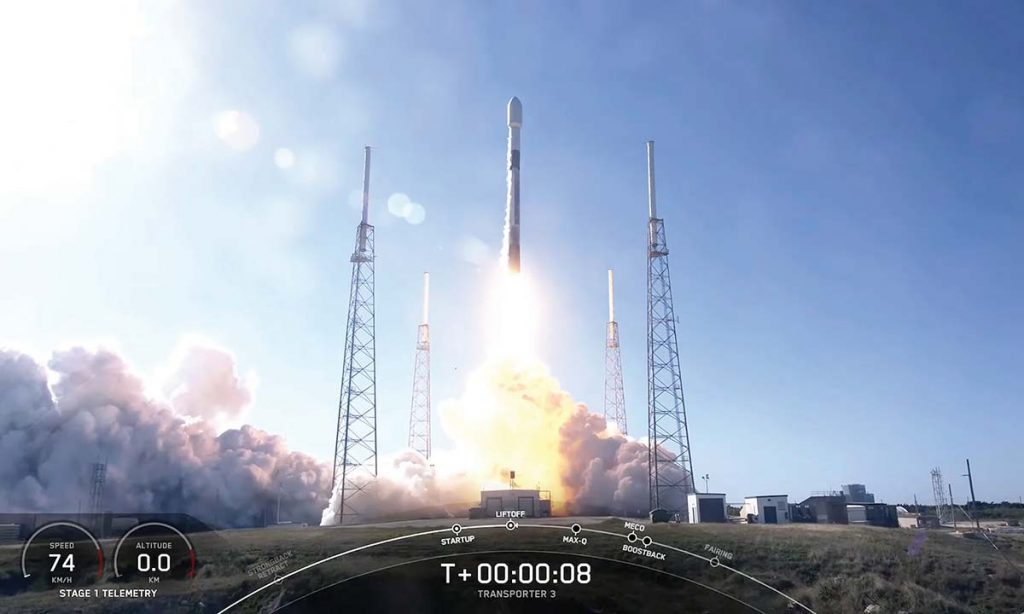KYIV – Riding a SpaceX Falcon 9 rocket launched from Cape Canaveral, Fla., Ukraine sent its first satellite in a decade to space on January 13. The optical satellite Sich-2-30 was designed to capture digital photos of the Earth’s surface. More specifically, the satellite, which was designed at the Pivdenne (also known as Yuzhnoye) Design...
 SpaceX livestream via YouTube
SpaceX livestream via YouTube
A screen shot of a video shows the launch of a SpaceX Falcon 9 rocket that carried the Ukrainian satellite Sich-2-30 into space from the launch facility in Cape Canaveral, Fla., on January 13.
